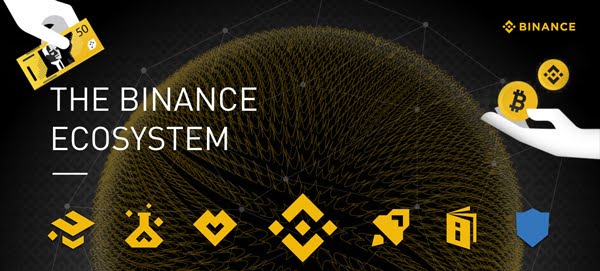One of the points of greatest interest for crypto miners and validators in recent months has been MEV, or “maximal extractable value” (the term can also stand for “miner extractable value”). Sometimes MEV is referred to as the “invisible tax” miners collect from participants in a crypto economy by reordering and manipulating transactions in the validation process. But what exactly is MEV, how does it work, and what are some of its potential impacts on crypto ecosystems?
Profit in Transaction Manipulation
In a cryptocurrency system, regardless of the type of consensus mechanism used to confirm transactions, pending transactions are held in what is known as the “mempool,” a waiting area that is visible to the public. Miners or validators in the system then select transactions, order them, and make a block, which is subsequently validated and added to the blockchain.
In 2014, an algorithmic trader using the handle Pmcgoohan predicted that miners might be able to manipulate the transactions in a mempool in order to derive a profit. They wrote that “miners can see all the contract code they run…and the order in which transactions run is up to individual miners…what is to stop front running by a miner in any marketplace implementation?”
Origin of the Term “MEV”
Phil Daian and a team of smart contract researchers wrote a 2019 paper, “Flash Boys 2.0,” which coined the term “miner extractable value.” For Daian’s team, MEV signified the “total amount of ETH miners can extract from manipulation of transactions within a given time frame.” MEV in this case was coined in the context of proof-of-work consensus mechanisms, in which miners govern the order of and whether or not to include transactions in a block. When Ethereum’s blockchain shifted to proof-of-stake during The Merge in 2022, the term shifted to “maximal extractable value” to reflect a wider group of methods miners and validators used.
How Does it Work to Extract MEV?
In theory, network miners or validators should receive the entirety of the MEV available for a given transaction. In actuality, though, independent network members known as “searchers” have increasingly used bots to detect MEV opportunities and automate the extraction process. This is not entirely a negative thing for miners, who tend to receive gas fees from searchers keen to have their transactions included in a block for validation.
Some of the techniques used to extract MEV include:
Liquidation: In a DeFi lending space, users must deposit crypto to be used as collateral. If a user isn’t able to repay their loans, the protocols often allow other participants the chance to liquidate the collateral and gain a liquidation fee from the borrower. Those searching for MEV opportunities may compete to find borrowers primed for liquidation so that they can gain the liquidation fee for themselves.
Front-running: A bot known as a “generalized front-runner” is able to search the mempool for transactions that could be profitable for a searcher. Upon discovering a candidate, the bot replicates the original transaction but with a higher gas price, prompting miners to choose that transaction over the first one.
While front-running may disrupt the overall flow of the transaction validation process, there are some participants in crypto systems that seek to find something positive in the goals of front-runners. A number of services now exist to allow miners and Ethereum users to communicate with one another about preferred transaction orders in a block. This helps to more fairly distribute MEV extraction and also minimizes the effectiveness of the front-running technique described above.
DEX arbitrage: Decentralized exchanges may list different prices for the same tokens as a result of different levels of demand. A wide price discrepancy may be an opportunity for MEV extraction. Bots can exploit these situations by buying tokens at a lower price at one exchange, turning around and selling them on a second exchange at a higher rate.
Arbitrage in this way is increasingly competitive, but it has the added benefit of helping to align token prices across exchanges and making the broader DeFi market more efficient.
Sandwich attack: A so-called “sandwich attack” is a technique used to manipulate the prices of crypto tokens. A searcher who finds a large trade that is pending on a DEX may attempt to “sandwich” that trade between his or her own. The searcher places a trade using the same token immediately before and another right after the large pending trade in an attempt to benefit from the temporary (and artificial) price discrepancy. The searcher thus pumps up the token price for the unwitting trader, who ends up paying a higher rate, and then sells tokens into the pool at that higher price to gain a profit on the difference.
What is the Impact of MEV Extraction on a Crypto Market?
Extracting MEV can be a complicated process that has a similarly complex impact on the crypto market more broadly. While sandwich attacks and front-running have the potential to cause delays to the processing time for other transactions—and to cost users more due to higher gas fees and artificially manipulated token prices—decentralized exchange arbitrage has a benefit in that it makes exchanges more aligned and the market more efficient. And some may argue that extracting MEV through DeFi liquidation is simply capitalizing on the system in a way that all participants knowingly sign up for when they borrow. Still, some MEV searchers may find themselves with a bad reputation—or even facing a ban from participating in certain crypto markets.
Cheat Sheet
MEV is a crypto term standing for “maximal extractable value.” It was coined in 2019 in a paper by Phil Daian and his team but originally described in 2014.
Daian defined MEV as the “total amount of ETH miners can extract from manipulation of transactions within a given time frame.”
MEV hinges on the fact that miners and other participants in the validation process can reorder and manipulate transactions for their own personal gain.
“Searchers” are participants who use bots to search a mempool of pending transactions for potential MEV profit opportunities.
Some of the ways that searchers extract MEV include DeFi liquidation, front-running, DEX arbitrage, and sandwich attacks.
MEV extraction can clog up the validation process for other users and force users to pay higher prices on transactions, but it can also help to equalize token price discrepancies across decentralized exchanges.
Stay on top of crypto news, get daily updates in your inbox.






